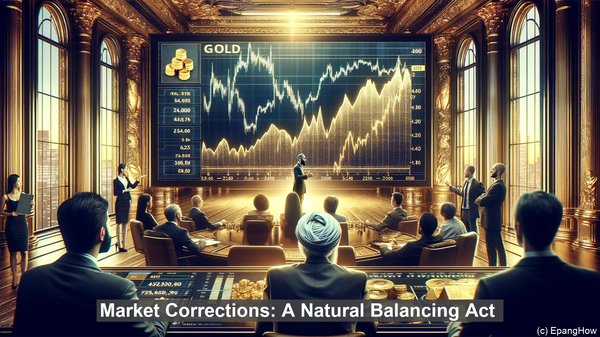Introduction: The Ebb and Flow of Financial Markets
Hello, and welcome to our article on speculative bubbles and market corrections. Financial markets are known for their dynamic nature, with periods of exuberance and downturns. Two key events that often dominate the headlines during these cycles are speculative bubbles and market corrections. While both signify significant shifts in market sentiment, they are fundamentally different in their origins and implications.
Speculative Bubbles: The Temptation of Exponential Growth
Speculative bubbles are like sirens, luring investors with the promise of quick and exponential gains. These bubbles typically occur when the prices of certain assets, such as stocks or real estate, skyrocket, driven not by their intrinsic value but by market hype and speculation. The fear of missing out, or FOMO, often fuels the bubble, as more and more investors jump in, hoping to ride the wave of growth. This influx of demand further drives up prices, creating a self-reinforcing cycle.
The Anatomy of a Bubble: Irrational Exuberance and Herd Mentality
At the core of a speculative bubble is irrational exuberance, a term coined by economist Robert Shiller. During these periods, investors become overly optimistic, disregarding traditional valuation metrics and instead relying on the ‘greater fool theory.’ This theory suggests that as long as there is someone willing to buy an overpriced asset, the bubble can continue to expand. The herd mentality also plays a crucial role, as investors often base their decisions on the actions of others, rather than conducting independent analysis.
The Inevitable Burst: When Reality Strikes
While the allure of a speculative bubble is undeniable, it is often short-lived. Eventually, the market reaches a tipping point, and the bubble bursts. This can be triggered by various factors, such as a negative economic event or a sudden loss of confidence. As prices start to plummet, panic ensues, and the once-optimistic investors rush to sell, further exacerbating the decline. This rapid and drastic drop in prices is what distinguishes a bubble burst from a gradual market correction.

Market Corrections: A Natural Balancing Act
In contrast to the sudden and dramatic nature of a bubble burst, market corrections are more like a controlled descent. These corrections, also known as pullbacks or retracements, are a natural part of market cycles. They serve as a mechanism to restore equilibrium, bringing prices back in line with the underlying fundamentals. While they can be unsettling, especially for those who entered the market during a bubble, corrections are essential for the overall health and stability of the financial system.
Understanding the Triggers: From External Shocks to Overvaluation
Market corrections can have various triggers. External factors, such as geopolitical tensions or changes in monetary policy, can send ripples through the market, prompting a correction. Additionally, overvaluation of assets, often a result of a prolonged period of growth, can also be a catalyst. When prices become detached from their intrinsic value, a correction becomes almost inevitable, as the market seeks to realign itself.

The Silver Lining: Opportunities Amidst the Chaos
While market corrections can be unnerving, they also present unique opportunities for investors. As prices decline, assets that were previously overvalued may become more attractive, offering a chance to enter the market at a more reasonable price. For those with a long-term investment horizon, corrections can be a time to accumulate assets, with the potential for significant returns once the market rebounds.
